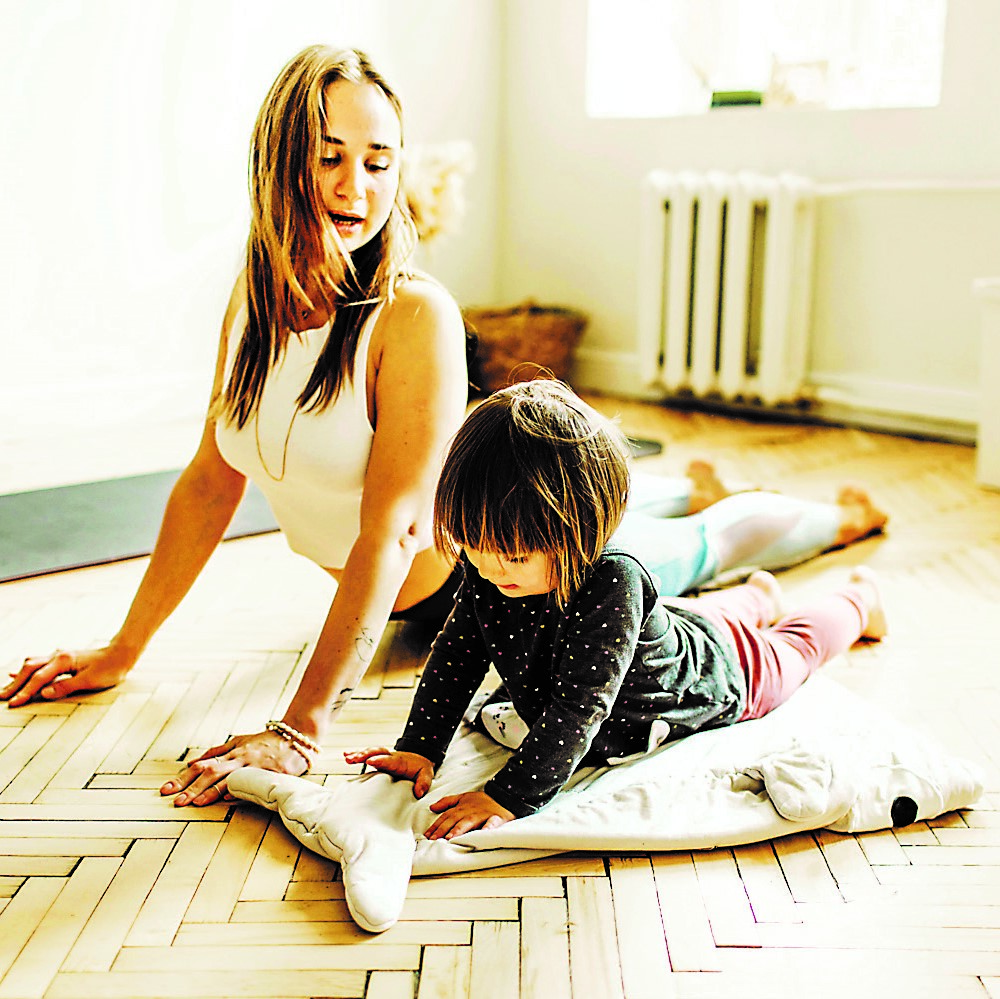
News

How to keep fit behind the fence
GILLIAN KLAWANSKY
“It’s important to keep fit, active, and healthy, but especially at this trying time,” says local personal trainer Mandy Moss. Most importantly, being active helps to keep your immune system strong. “The best project you will ever work on will be yourself. That’s important to remember during tough times like these.”
Aside from following a healthy diet and getting enough sleep, being mobile and active during lockdown is vital, say experts. Innovation is key. “Exercise can be done very easily from home, we just need to get creative,” says Moss. “For example, if you don’t own dumbbells, doing weights with heavy water bottles is a good alternative.”
She also suggests using a chair as a workout tool, whether you’re doing step-ups, push-ups, jump squats, or tricep dips. For tricep dips, sit in a chair, hold the front of it, keeping hands against your hips behind you. Keep your feet flat on the floor hip distance apart. Push your hips and feet out, and bend your knees slightly. Slowly lower your body until your elbows form a 90 degree angle, and then rise again until your arms are straightened. Adjust the intensity of exercise to suit your fitness levels, suggests Moss.
Evan Hesselberg, a personal trainer in Norwood who offers home training, also suggests using what’s available to create exciting workouts. Getting off the couch and stretching before getting moving is essential, he says. Hesselberg includes boxing in his workouts. “Boxing is a form of cardio and conditioning, boosting heart rate, getting you fit, and conditioning your muscles,” he says. “If you don’t have a bag and gloves, you can hang up a pillow and punch it, or get someone to hold up a pad for you and box that.”
The most important thing with kids, Hesselberg says, is to keep things fun. “Don’t do the same things over and over, keep their minds and bodies busy.” Kids can do anything from push-ups to sit-ups to running around the garden. Make obstacle courses using chairs, balls, and whatever you have around the house, he suggests.
There’s no limit to the number of exercises you can do from home, says personal trainer Natalie Rosen. Generally, one should train three to four times a week depending on fitness levels. “At this time, I’d suggest training for half an hour every single day. Exercise is vital, it helps to take the cobwebs out of your brain.” She warns of the dangers of staying sedentary, stressing that doing nothing becomes a vicious cycle. “The less you do, the less you want to do.
“Getting those endorphins going gives you an overall feeling of well-being,” she says. “Get out into the fresh air [within prescribed lockdown limits] and walk or run – whatever your fitness level allows. Just standing outside for ten minutes also provides a much-needed dose of vitamin D.” Pull, push, and body weight exercises are easy to do at home, says Rosen. Squats, lunges, sit-ups, skipping, and running on the spot are all effective.
Experts recommend developing a high-intensity interval training programme. “This includes a bit of cardio which is great for keeping up fitness levels, especially if you were previously doing a contact sport,” says Moss. “It’s great for beginners as well as you could do a less intense workout with the same principles. This workout is the best for lean toning of muscles, and most importantly, it can all be done at home.”
For beginners, Moss suggests the following high-intensity workout made up of a circuit of four exercises that can be repeated three times:
1. Jumping jacks for 30 seconds;
2. Ten incline push-ups (hands on a chair);
3. Sitting squat against the wall for 30 seconds; and
4. Ab bicycles – lying on the floor and moving your legs in the air like you’re riding a bicycle for 30 seconds.
Rosen also suggests a simple high-intensity exercise, one that can be adjusted for any fitness level. “Choose four or five exercises to do, targeting different areas of your body,” she says. “Then do that as a circuit and repeat it three to four times. For example, do 15 squats, then 15 lunges, 15 squat jumps, 15 sit-ups, and 15 push-ups. Repeat that circuit three to four times with small breaks between each circuit.” Depending on your strength and fitness, you can reduce the lengths of breaks in between each exercise and in between each circuit. Getting your heart rate up to between 130 and 150 beats per minute for half an hour is the goal.”
Yoga is also a great fitness practice to adopt at home especially in a lockdown situation. Candice Garrun Davies, who is offering a free virtual studio during lockdown, explains the benefits. “Yoga is more than just a physical practice, it’s a practice that stills the mind,” she says. “It allows you to focus on the connection between mind and body, and still feel the benefits of the things that come with a physical workout like strengthening and toning. We store everything in our tissues, cells, organs, everything that we’re going through emotionally, and we need an outlet. Physically, you’ll release that through the endorphins that are activated by moving your body. At the same time, you’ll feel the benefits of stilling your mind which helps release anxiety and difficult emotions.”




